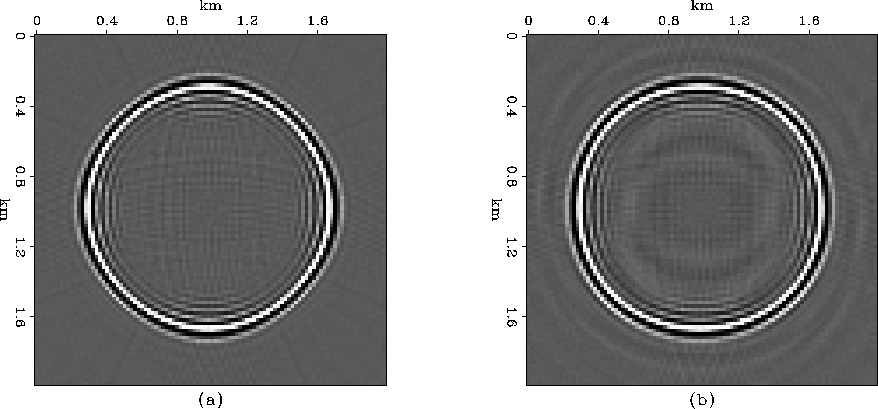




Next: Conclusions
Up: Rickett: FFD migration with
Previous: Helical factorization
Figure 1 compares depth-slices through impulse
responses of FFD migration (with c/v=0.8) for the splitting
approximation, (a), and the helical factorization, (b).
The azimuthal anisotropy is noticeably reduced with the helical
factorization.
timeslices
Figure 1 Depth-slices of centered impulse response corresponding to a dip of
45 for c/v=0.8. Panel (a) shows the result of
employing an x-y splitting approximation, and panel (b)
shows the result of the helical factorization. Note the azimuthally
isotropic nature of panel (b).





Figure 2 shows extracts from a three-dimensional
FFD depth migration of a zero-offset subset from the SEG/EAGE salt
dome dataset. This rugose lateral velocity model initially caused
mild stability problems for the FFD migration, and
I had to smooth the velocity model to produce the results shown in
Figure 2.
Biondi (2000) presents an unconditionally stable
formulation of the FFD algorithm; however, that formulation does not
easily fit with the approximate helical factorization discussed here.





Next: Conclusions
Up: Rickett: FFD migration with
Previous: Helical factorization
Stanford Exploration Project
4/27/2000
